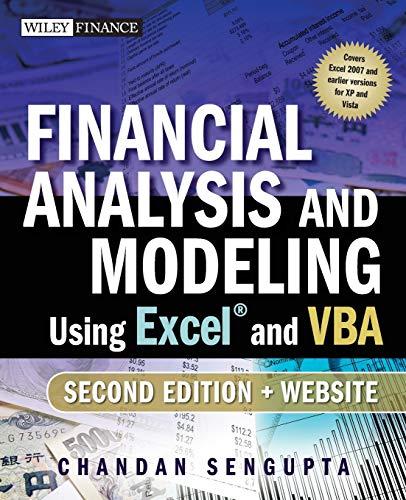
Obtain from Bloomberg (or Datastream, or Thomson ONE Banker, or Yahoo!Finance) the beginning of month values for the period 2002-2020 of both EURONEXT 100 (^N100) index and KBW Nasdaq Bank Index (^BKX). Assume that you are a risk-averse investor. For each of the two assets represented by the indices, calculate annual returns and build a frequency distribution of annual returns. Provide graphs of the distributions. Explore the risk-return relationship for the two assets. Plot your results on a graph with the standard deviation of annual returns of each asset on the horizontal axis and the average annual return on the vertical axis, and comment on which asset performed better. Assume that you form a portfolio by investing equal amount of money in each asset. Determine the average and standard deviation of the portfolio's annual returns. Provide your interpretation of the risk and return of the equally-weighted portfolio compared to those of the individual assets. Calculate and graph the average annual returns and standard deviations of all portfolios that are combinations of EURONEXT 100 (^N100) index and KBW Nasdaq Bank Index (^BKX), with the proportion of EURONEXT 100 (^N100) index being 0, 10, 20, 30, 40, 50, 60, 70, 80, 90, 100%. Comment on the profile of the portfolios. Obtain from Bloomberg (or Datastream, or Thomson ONE Banker, or Yahoo!Finance) the beginning of month values for the period 2002-2020 of both EURONEXT 100 (^N100) index and KBW Nasdaq Bank Index (^BKX). Assume that you are a risk-averse investor. For each of the two assets represented by the indices, calculate annual returns and build a frequency distribution of annual returns. Provide graphs of the distributions. Explore the risk-return relationship for the two assets. Plot your results on a graph with the standard deviation of annual returns of each asset on the horizontal axis and the average annual return on the vertical axis, and comment on which asset performed better. Assume that you form a portfolio by investing equal amount of money in each asset. Determine the average and standard deviation of the portfolio's annual returns. Provide your interpretation of the risk and return of the equally-weighted portfolio compared to those of the individual assets. Calculate and graph the average annual returns and standard deviations of all portfolios that are combinations of EURONEXT 100 (^N100) index and KBW Nasdaq Bank Index (^BKX), with the proportion of EURONEXT 100 (^N100) index being 0, 10, 20, 30, 40, 50, 60, 70, 80, 90, 100%. Comment on the profile of the portfolios







